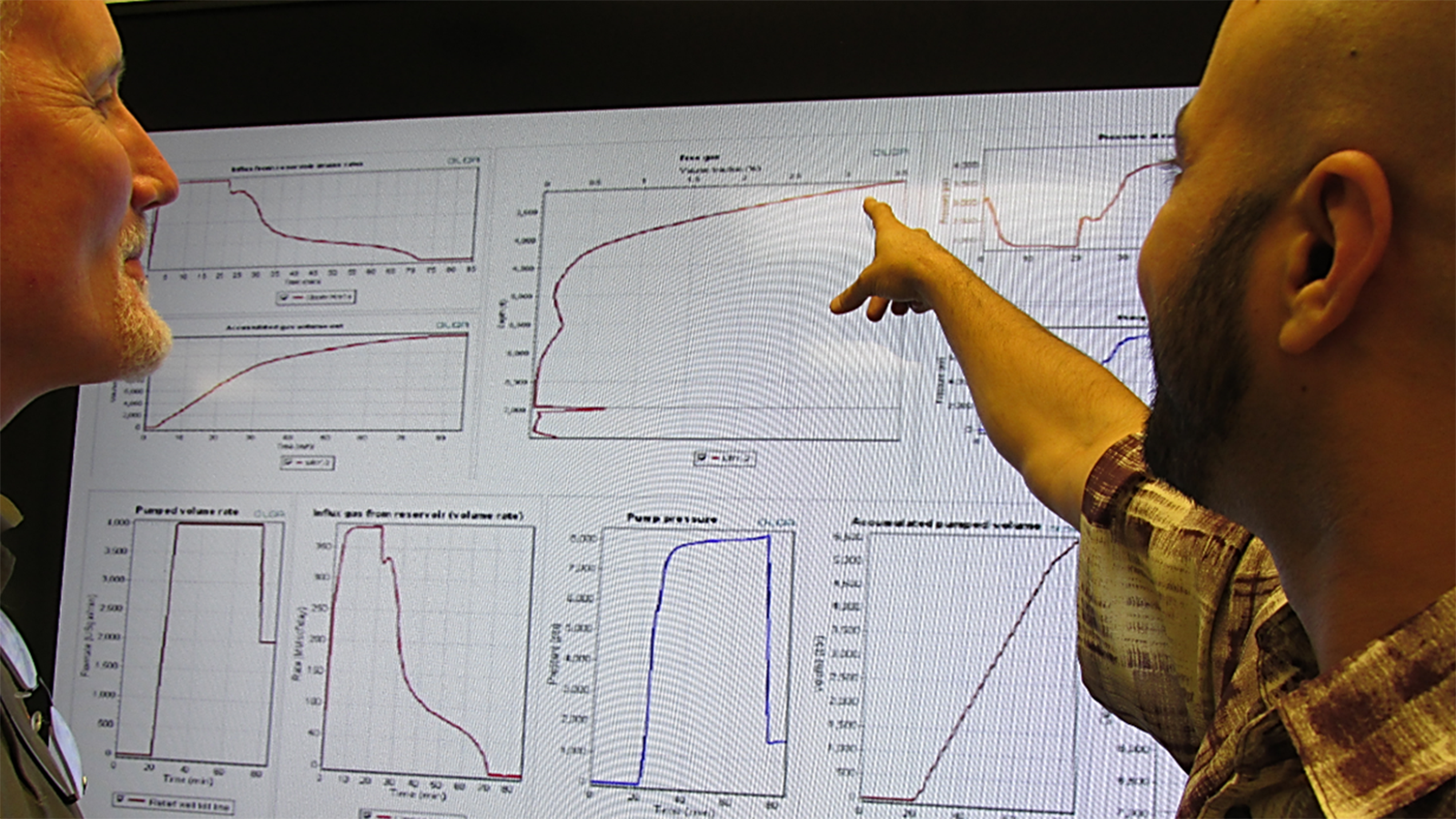 Search
Search
 Search
Search

Multidisciplinary response resolved a catastrophic blowout crisis in the first attempt
Download PDFCatastrophic gas well blowout in shallow depth

Indonesia

In Indonesia, an operator's shallow gas well experienced a catastrophic blowout. Boots & Coots was called in and successfully drilled a relief well, extinguished the fire, and cemented and abandoned the target well – all without any incidents.
The operator's wellbore was exposed to shallow, weak geological formations. The operator detected a kick while drilling the top section ahead of setting the surface casing. The flow was diverted with the well drilled to a depth of 2,160 ft. (658 meters) and the last casing seat set at 40 ft. (12 meters).
After unsuccessful attempts to contain the well from the surface by pumping fluid, the diverter system eroded, and fire quickly engulfed the site. The rig collapsed into the crater, and the drillstring dropped into the open hole. The operator contacted Boots & Coots to kill the blowout. Apart from containing the blowout, a major challenge was determining the precise location and trajectory of the target well, as survey data was very limited.
The team partially bridged the wellbore, significantly diminishing the crater's flame. However, new broaches appeared across the site because the wellbore was exposed to weak formations. These dispersed broaches posed a major hazard and had to be considered in selecting the location of the relief well and approaching the target.
Survey data of the site was limited to only four sets of inclination data. Since there were no details about the target well's trajectory, the ellipse of uncertainty was quite significant. To locate the target well, the team turned to survey and drilling data on eight offset wells in the area to ascertain the general trend and trajectory.
The target well's drill string consisted of 1,304 ft. (397 meters) of 5-in. drillpipe, 359 ft. (109 meters) of 5-in. heavy-duty drillpipe, 306 ft. (93 meters) of 6-1/4-in. drill collar, and 191 ft. (58 meters) of the 8-in. drill collar. Active ranging was used to detect it in the 12-1/4-in. openhole, and the top of the 8-in. drill collar was selected as the initial interception point, which would provide a 12-1/4-in. x 6-1/4-in. flow area for pumping the kill fluid.
It was a complex undertaking to position and design the relief well to intersect possible sidetracks of the target. It was set 500 ft. (152 meters) from the surface location of the target well, and drilling began with a 6-1/8-in. pilot hole to a depth of 170 ft. (52 meters), then opened to 26-1/2 in. After 20-in. casing was set, drilling resumed with a 17-1/2-in. bit and deviated at 300 ft. (91 meters) to reach an inclination angle of 30 degrees. A 13-3/8-in. casing was then set at a depth of 1,360 ft. (415 meters).
The next section was drilled with a 12-1/4-in. bit to 1,730 ft. (527 meters), and the first ranging run indicated the target well was 20 ft. (6 meters) away but its trajectory was still unknown. At 1,850 ft. (564 meters), the range indicated the target well was at a distance of 26 ft. (8 meters), ±6 ft. (1.8 meters), and its direction was 265 degrees relative to grid north. Though it was impossible to intercept the target from this initial relief trajectory, the relief well was drilled another 50 ft. (15 meters) to collect more data on the behavior of the target well and to pinpoint its trajectory.
Inidents for target well cemented and abandoned
From the surface was the position of the relief well
Ppg of kill fluid pumped
Responses resolved crisis
After the initial relief hole was plugged with cement, the relief well plan was revised, and the well was sidetracked to the new target location. Ranging runs in the sidetrack yielded more accurate data from gradient readings, and at 1,980 ft. (604 meters), the target was located at a horizontal distance of 4.2 ft. (1.3 meters). The decision was then made to change the original plan and to intercept the well at the current depth.
A 9-5/8-in. casing was set, the shoe tested, and the interception section was drilled with an 8-1/2-in. bit. The target well was intercepted, and the kill operation commenced by pumping 12.0 ppg of kill fluid at 11 bpm. Once killed, the well was displaced with 10.5 ppg of fluid and monitored. With gas dispersion from the craters and broaches dormant, the target well was finally plugged using a second-stage cement squeeze.
Collaborating with Halliburton cementing and drilling teams, we responded to the crisis immediately. Despite the lack of detailed data on the target well, the well control team devised a flexible plan, located the target well in the first ranging run, and successfully killed and plugged the well.

Solutions for effective well control and wellhead integrity through customized engineering and design.
